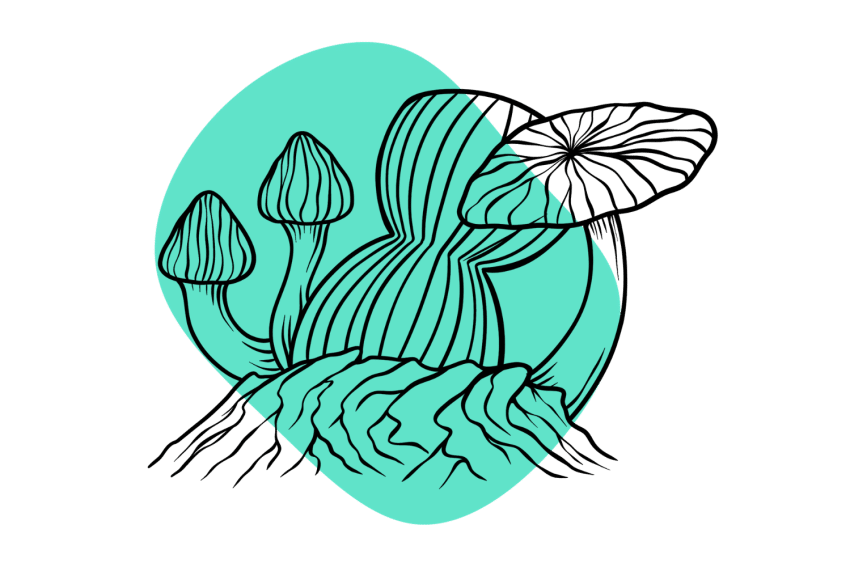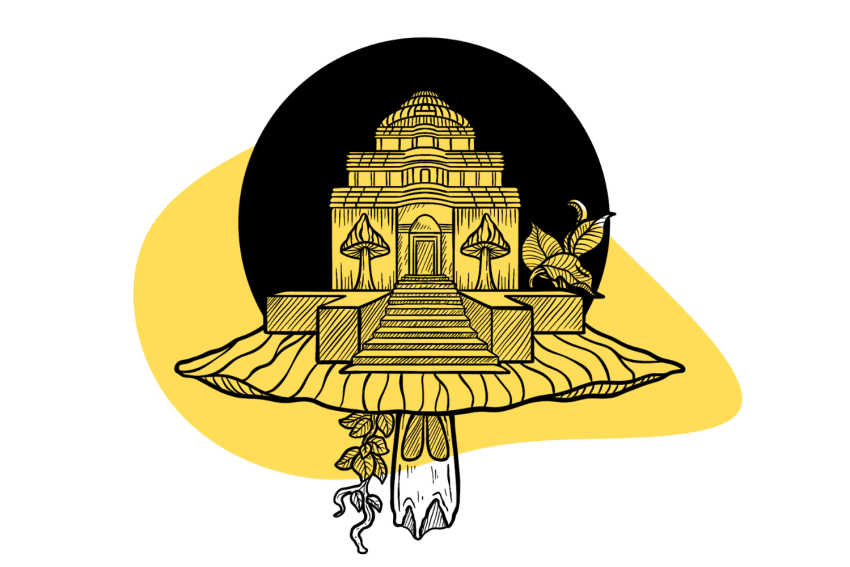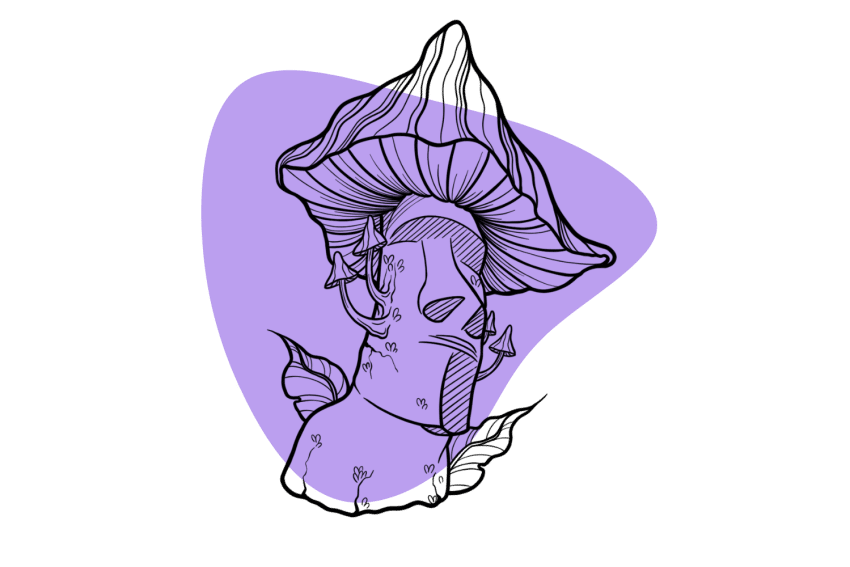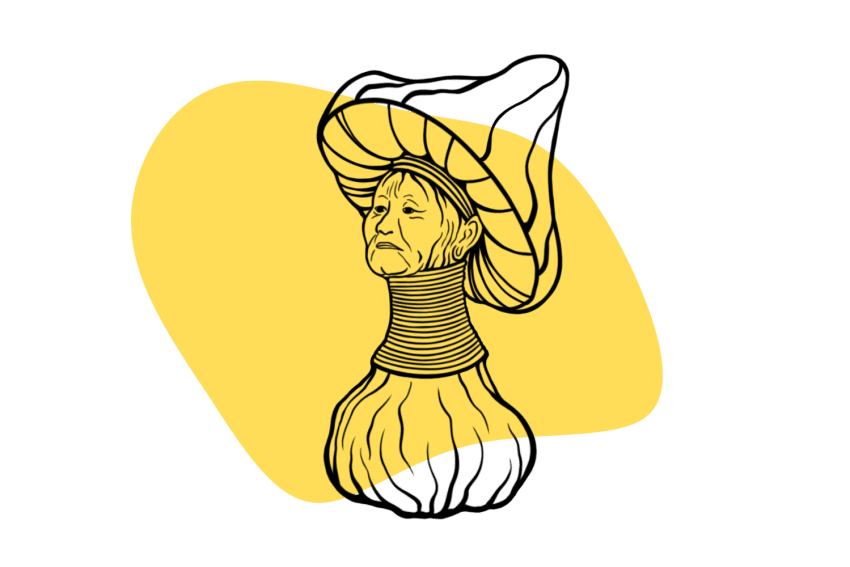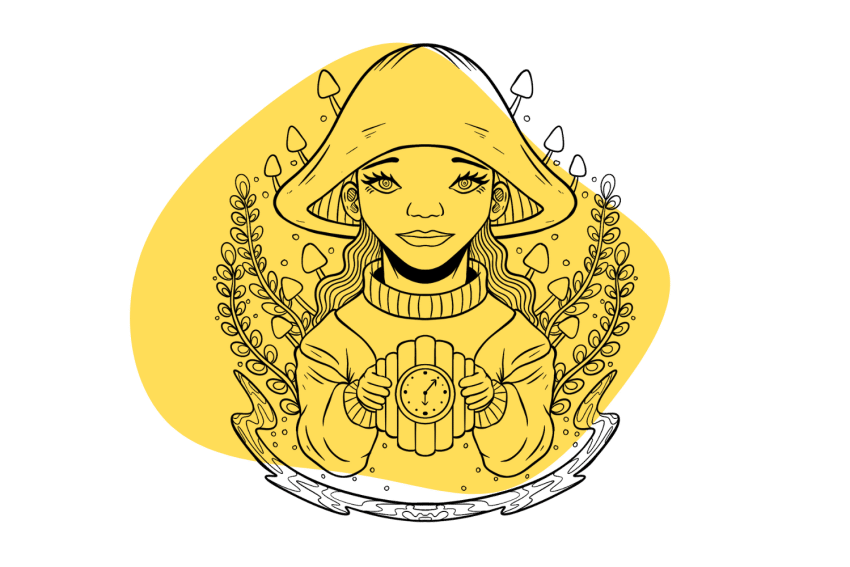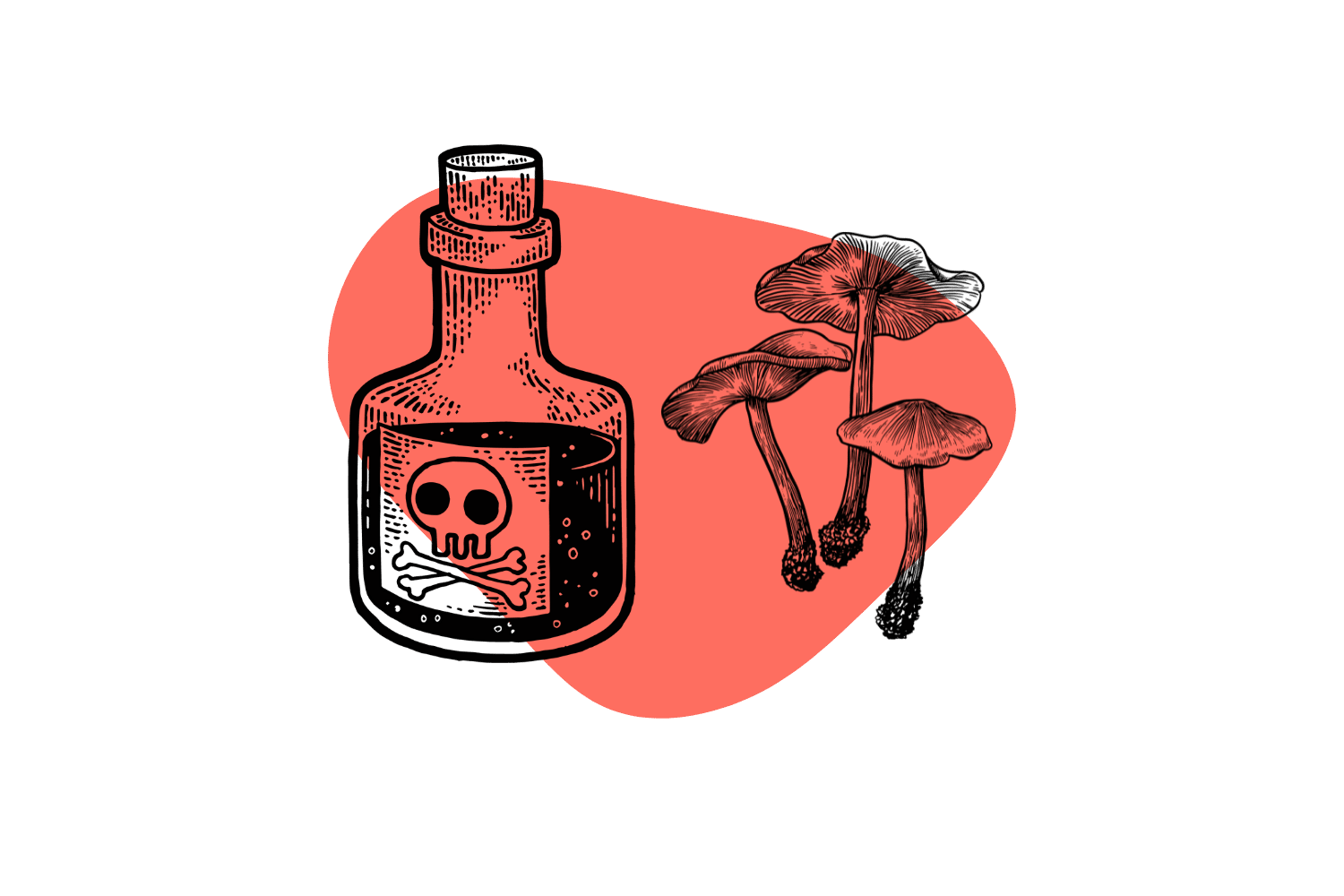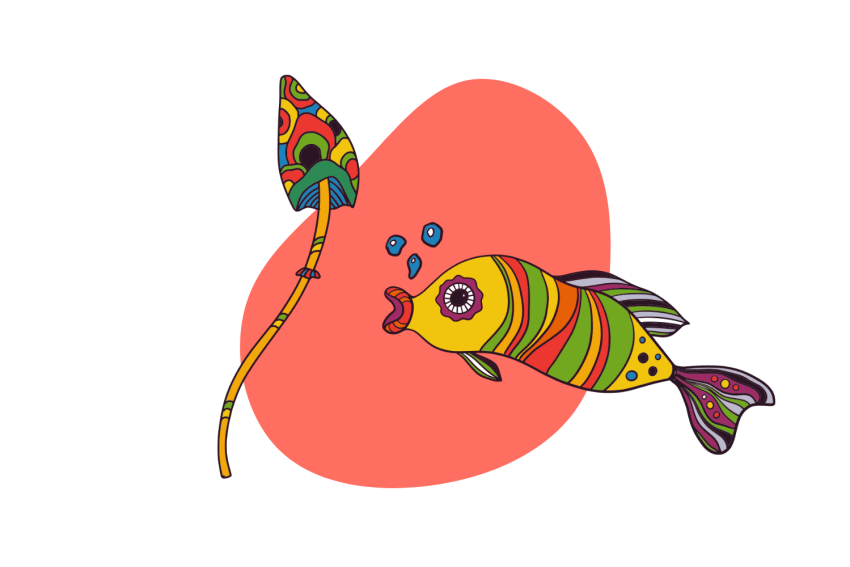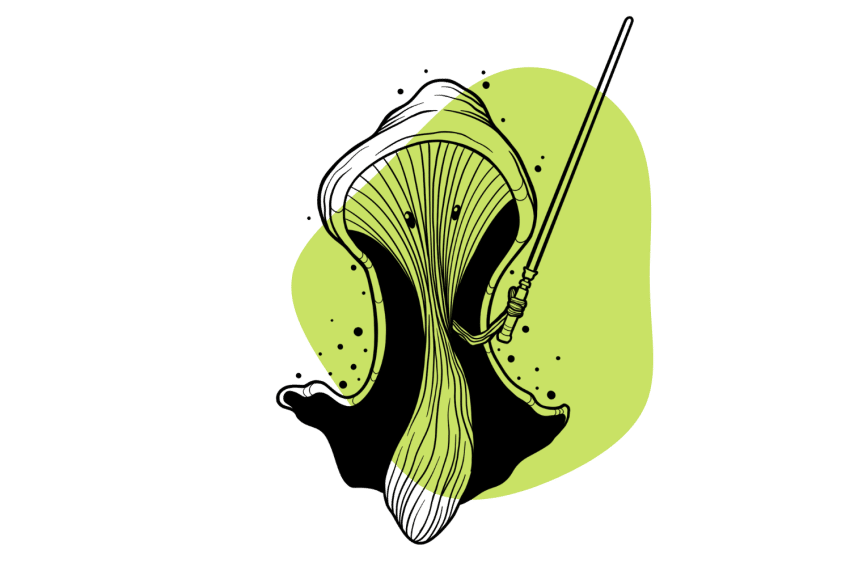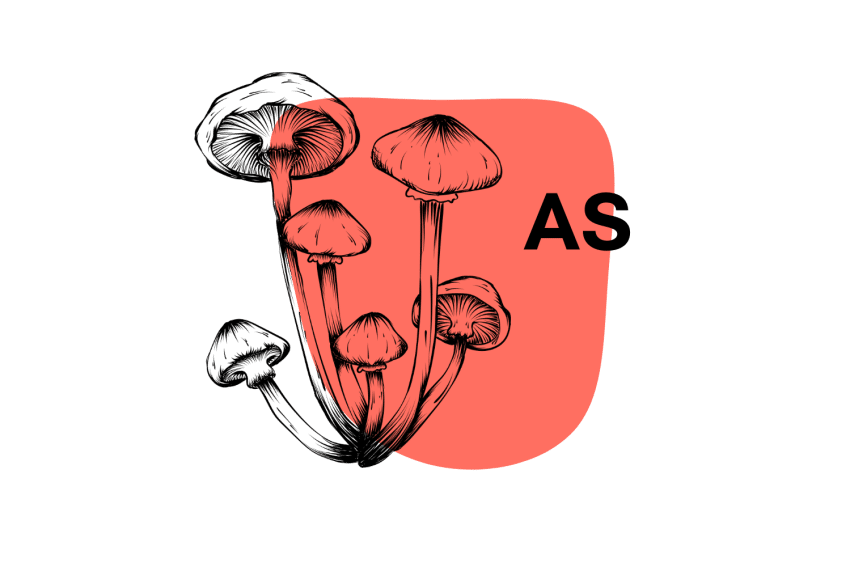Psilocybe tampanensis: The Philosopher’s Stone Mushroom
Psilocybe tampanensis is famed for its ability to produce psychedelic sclerotia that are aptly nicknamed “Philosopher’s Stones.”
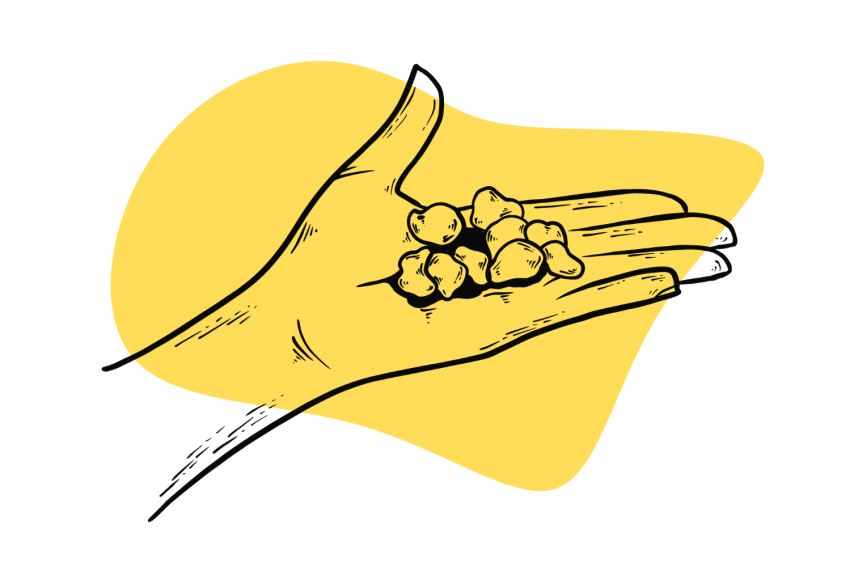
Psilocybe tampanensis is a peculiar species with underwhelming, small, brown mushrooms. What lies below the surface of these mushrooms is much more impressive. This species produces large masses of sclerotia — dense, truffle-like clumps of mycelium. As are the mushrooms, these “magic truffles” are psychedelic.
P. tampanensis was one of the first species cultivated for magic truffle production, and it kick-started the truffle market in the Netherlands, essentially saving the psilocybin scene when magic mushrooms were made illegal in 2008.
This mushroom species is loved by many, and it’s responsible for several important milestones in psychedelic history. Let me tell you more about it…
Quick Jump: Truffle potency, dosage information, wildcrafting, cultivation, preparation, and legality.
Related Guides: Magic Mushrooms 101 | Magic Mushroom Species List | Magic Mushroom Spore Vendor List 2024
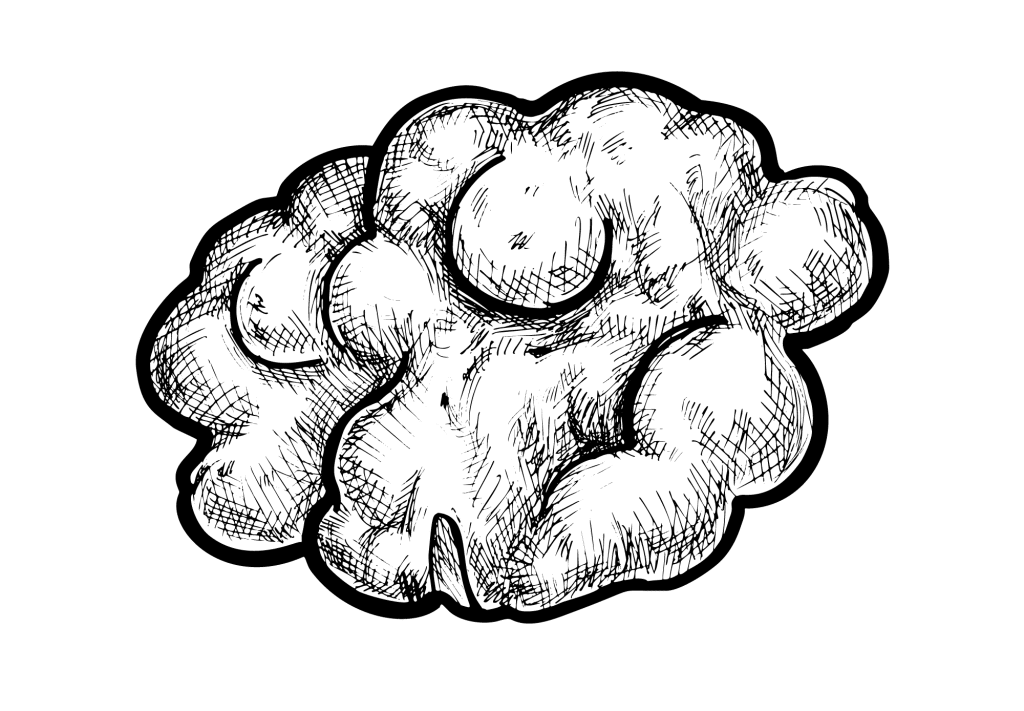
What Is Psilocybe tampanensis?
Psilocybe tampanensis is a rare psychedelic mushroom species originally collected from a meadow in Tampa, Florida, in 1977. Discovered by the legendary mycologist and “Mushroom Doctor” Steven Pollock, this species is unique in that it produces “sclerotia” (magic truffles) that can grow to enormous sizes.
Sclerotium is a mass of densely packed mycelium. In the psychedelic space, the sclerotia of psilocybin mushrooms are called magic truffles. However, they aren’t reproductive structures like traditional edible truffles are. Instead, these growths have the primary function of preserving the mushroom species through times of hardship.
Sclerotia can survive underground indefinitely — ensuring the longevity of the species. These clumps of mycelium can remain alive and dormant underground through long, harsh winters or periods of drought until conditions improve enough to support mushroom growth.
This species is often overlooked — they’re small, brown, and relatively unassuming. Even though P. tampanensis is largely cultivated, its mycelium is rarely left to fruit — cultivators are more interested in growing its sclerotia.
P. tampanensis mushrooms and truffles are relatively weak in terms of potency — producing psilocybin levels comparable to a low-potency strain of Psilocybe cubensis. That said, when over five grams of this species’ mushrooms or sclerotia are consumed, the user can experience deep introspection, an intense body high, and moderate visuals.
The History of Psilocybe tampanensis
The history of Psilocybe tampanensis is rather intriguing. There’s quite a story to this shroom, as it once disappeared entirely.
Let’s delve into the mysterious history of P. tampanensis and find out how it rose to fame…
1. Discovered in 1977
Psilocybe tampanensis was discovered in 1977 by none other than Steven Hyaden Pollock — a renowned mycologist who is often credited with the establishment of the famous Penis Envy strain of Psilocybe cubensis.
Pollock found the first sample of this rare Psilocybe species in Tampa, Florida — hence its species epithet “tampanensis.” He stumbled across the mushrooms while mushroom hunting in a sandy meadow grazed by Braham cattle with close friend and fellow mycologist Gary Lincoff. Although relatively boring in appearance, Pollock became rather intrigued with it.
He brought the specimen back to his remote Winnebago laboratory, where he dissected it and excised a small piece of stem tissue to an agar culture. While driving back from Tampa to his base in San Antonio, Pollock observed mycelial growth on one of the agar plates.
Some weeks later, he noticed something unusual about the Psilocybe tampanensis agar dishes. The mycelium began to glisten and form small, hard granules. He discovered a unique treasure that would change the course of his cultivation efforts entirely.
2. Strange Growths
Among the thin strands of web-like mycelium on his agar plates, several small lumps that looked like grains began to form. He left the plates undisturbed and observed them over several weeks.
The lumps grew larger and larger until they were the size of doorknobs. The masses of flesh had tinted shades of blue and purple. Pollock gave in and decided to experiment. He removed, dissected, and photographed the small lumps before boldly stepping into the unknown by eating them.
Pollock noted that the truffle-like growths tasted “nutty and tart” — a combination of kiwi fruit and cashew nuts. He also noted the telltale effects of the psychoactive compound psilocybin — the compound responsible for the hallucinatory effects of magic mushrooms.
Knowing he’d found something special, he called Lincoff to tell him they had discovered “the Philosopher’s Stone” in Tampa — and the iconic “magic truffle” was born.
Around one year later, in 1978, Steven Pollock and the Mexican mycologist Gastón Guzmán scientifically described the species and classified it as “Psilocybe tampanensis” in the Mycotaxon publication [1].
3. “Truffles the Size of Ostrich Eggs”
After discovering the Philosopher’s Stone, cultivating Psilocybe tampanensis became a priority for Steven Pollock. He wanted to bring these psychedelic truffles to the masses, believing that they could “transport the fortunate consumer to states of spiritual transcendence and jubilation far beyond the realm of ordinary psychedelics.”
From the minute he discovered the Philosopher’s Stone, he began developing a cultivation technique to produce masses of sclerotia. He set up a huge cultivation lab and perfected his technique.
Pollock began producing sclerotia from Psilocybe tampanensis, some of which grew to enormous proportions. In a 2011 Harper’s article, Gary Lincoff reported that some of Pollock’s Philosopher’s Stones grew to “the size of ostrich eggs” [2].
Pollock planned on selling Psilocybe tampanensis sclerotia via the mail service in the United States. He and his colleague, Michael Forbes, founded a company named “Hidden Creek” in 1979 to sell the truffles he produced. Pollock and Forbes advertised their company in the monthly issue of High Times magazine.
Pollock and Forbes successfully sold hundreds of P. tampanensis truffles through Hidden Creek, but the enterprise ended after a devastating turn of events.
4. A Sad & Abrupt End to the Philosopher’s Stone
In 1981, less than two years after Hidden Creek was founded, Pollock’s work came to a sudden end when he was tragically murdered in his home cultivation lab.
The 33-year-old was found dead in a pool of blood with a one-inch laceration on his forehead. His pocket linings were inside out, and a series of keys were scattered around his body in a “halo.” The house was turned upside down, and a collection of ornamental glass mushrooms was arranged on a chest beside his door.
Apparently, Pollock was found clutching a Penis Envy mushroom in each hand, but the crime report never detailed this. Either way, his murder was peculiar. It was ruled as an unfortunate burglary, but the person who killed Pollock appeared to be frantically searching for something in particular.
Over 1,753 spawn jars were recovered from Pollock’s cultivation lab, many containing mycelium of Psilocybe tampanensis. Ten pounds of ground P. tampanensis sclerotia were also recovered. Pollock had prepared them for analysis just days before his murder.
Walter Pollock (Steven’s father) warned the police that destroying his son’s work would be a grave mistake, believing the rare species he had discovered could harbor great medical value. Regardless, the DEA destroyed everything related to the illicit mushrooms, and so Pollock’s life work and the Philosopher’s Stone legacy abruptly ended.
Walter Pollock contacted his son’s business partner, Michael Forbes, and attempted to persuade him to move Hidden Creek to Haiti, where he had criminal connections that could provide protection. However, Forbes declined the offer and dissolved the business.
The magic truffles all but disappeared after this dramatic chain of events, and the rare species wouldn’t be found in the wild again for over a decade. The murder of Steven Pollock remains unsolved to this day.
5. Psilocybe tampanensis Reborn…
The survival of the P. tampanensis species can be credited to a man named Stephen L. Peele — the author of a book titled “The Golden Doorknob” (2001).
Stephen Peele was a former police officer from Virginia who used his background in law enforcement to obtain a Schedule 1 permit that allowed him to cultivate and research psilocybin mushrooms.
Peele lays out his 20 years of research into psilocybin mushrooms in The Golden Doorknob. After Pollock’s death, Peele began cultivating P. tampanensis from a spore sample from Pollock’s lab that “survived the wrath of the DEA.”
In his book, Peele talks about the species, saying: “It was once only held by 5 people when I deposited it into the CBS Culture Bank in the Netherlands to ensure that it would not die out. I was once told that even Paul Stamets lost his culture.”
The sample Peele sent to the Netherlands in the mid-90s kicked off the Dutch magic truffle market. At the time, magic mushrooms were legal to produce, sell, and consume in the liberal European country. Magic truffles were also cultivated and sold during the 1990s, but magic mushrooms were far more popular.
However, in 2008, a decision from the Dutch government would change things — psilocybin-producing mushrooms were made illegal. However, the legality of psilocybin truffles remained unchanged, causing the truffle market to boom. With vendors unable to sell shrooms legally, cultivators began producing masses of truffles from Psilocybe mexicana and Psilocybe tampanensis spawn.
Fast forward to the present day. Psilocybe tampanensis are sold fresh under the name “Philosopher’s Stones” from various vendors known as “Smart Shops” in most major cities and towns.
The Potency & Effects of Psilocybe tampanensis
Psilocybe tampanensis is relatively weak in terms of potency. Not much is known about the tryptamine content of the mushrooms this species produces, but there is some data on the potency of its sclerotia.
“Philosopher’s Stone” sclerotia produces somewhere around 0.70% total tryptamines — psilocybin, psilocin, baeocystin, and others. The psilocybin content is around 0.40%, and the psilocin content is around 0.20%. These levels can vary from truffle to truffle, with some more potent than others.
Unfortunately, very little information is available on the exact tryptamine levels of these truffles, which is surprising considering how popular they are in the Netherlands.
One thing is for sure: they’re not as strong as the typical “magic mushroom,” meaning larger doses are needed to induce noticeable psychedelic effects. Thanks to trip reports and first-hand experiences in Holland, we do have some information on these truffle’s effects.
You can expect light visual stimulation, a strong body high (feelings of euphoria and waves of energy), and increased sociability after a medium-level dose of Philosopher’s Stone truffles.
The effects of magic truffles include:
- Altered mood
- Changes in perception of self
- Distorted perception of time
- Enhanced creativity
- Euphoria
- Increased emotional intensity
- Increased empathy
- Increased introspection
- Increased sociability
- Spiritual (mystical) experiences
- Visual & auditory hallucinations
Magic Mushroom Species Potency Comparison
We’ve been developing a database to track the potency of various mushroom species. Here, we’ve ranked each species according to their combined psilocybin, psilocin, and baeocystin levels.
Psilocybe tampanensis currently ranks 9th on the list.
Related Articles: Strongest Magic Mushroom Species & Average Magic Mushroom Potency for more information.
What’s the Dose of Psilocybe tampanensis Mushrooms?
Unlike most magic mushrooms, eating a gram or two of Psilocybe tampanensis sclerotia won’t induce any psychoactive effects. The psilocybin and psilocin levels found in Philosopher’s Stone truffles are far lower than most other magic mushroom species. Therefore, a larger dose (in weight) is needed to induce a psychedelic trip.
Five grams or more of fresh Psilocybe tampanensis truffles are needed to feel any psychedelic effects, and even a dose of this level can be considered a “macrodose” — a mild psychedelic dose.
To induce a strong psychedelic trip comparable to 3.5 to 5 grams of dried Psilocybe cubensis mushrooms, 10 grams or more of fresh Philosopher’s Stones must be consumed.
Here are the rough doses in fresh weight for Psilocybe tampanensis sclerotia:
- Low Dose — 3.5–5 grams
- Medium Dose — 5–7 grams
- High Dose — 10–15 grams
- Heroic Dose — 15 grams or more
Magic Mushroom Dosage Calculator
Double-check the potency of the DXM you’re using, and look for the addition of other compounds such as acetaminophen which can cause severe liver-toxic side-effects at this dose.
Microdosing Psilocybe tampanensis
Psilocybe tampanensis is a popular truffle for microdosing, especially in Europe, where they can be purchased from vendors based in the Netherlands. Commercial cultivators of P. tampanensis sclerotia tend to harvest the truffles when pea-sized because harvesting them when larger means waiting for several months.
The small size of these truffles makes them the perfect candidates for microdosing. Each pea-sized truffle weighs around 1 gram (fresh) — enough psilocybin to benefit from without inducing psychedelic effects.
Magic truffle microdoses are available to purchase from several companies based in the Netherlands, and there are a few in the US and Canada. Keep in mind that although many Netherlands-based microdose companies will ship throughout Europe, psilocybin is a restricted substance in many countries. You could face charges if magic truffle microdoses are ordered in a restricted country.
Here’s where you can buy P. tampanensis microdoses:
Related: Shroom Vendors Analysis (2024)
Where Can You Find Psilocybe tampanensis Mushrooms?
Psilocybe tampanensis mushrooms are hard to come by in the wild. Although spore samples are easy to get through a selection of spore vendors worldwide, this species is much more challenging to come by in the wild. They grow in a very select region of the United States and Mexico.
These mushrooms grow in the eastern part of the United States in the subtropical regions from Florida and down the Gulf Coast to Texas, extending into northwestern Mexico.
Psilocybe tampanensis is a subtropical species that’s extremely rare. There are very few records of this mushroom, and it isn’t easy to find. The mushrooms grow solitary or in small clusters of two or three fruits. They like sandy soils and free-draining meadows and pastures.
How to Identify Psilocybe tampanensis
Psilocybe tampanensis can be a difficult species to identify in the wild because of its rarity. Several similar species can be mistaken for it. It’s far easier and safer to cultivate this species at home.
If you’re lucky enough to find a P. tampanensis specimen in the wild, you’ll probably be underwhelmed by its appearance. They’re a dull-brown color, small, and “leggy” — tall and slender.
Related: Mushroom Anatomy 101
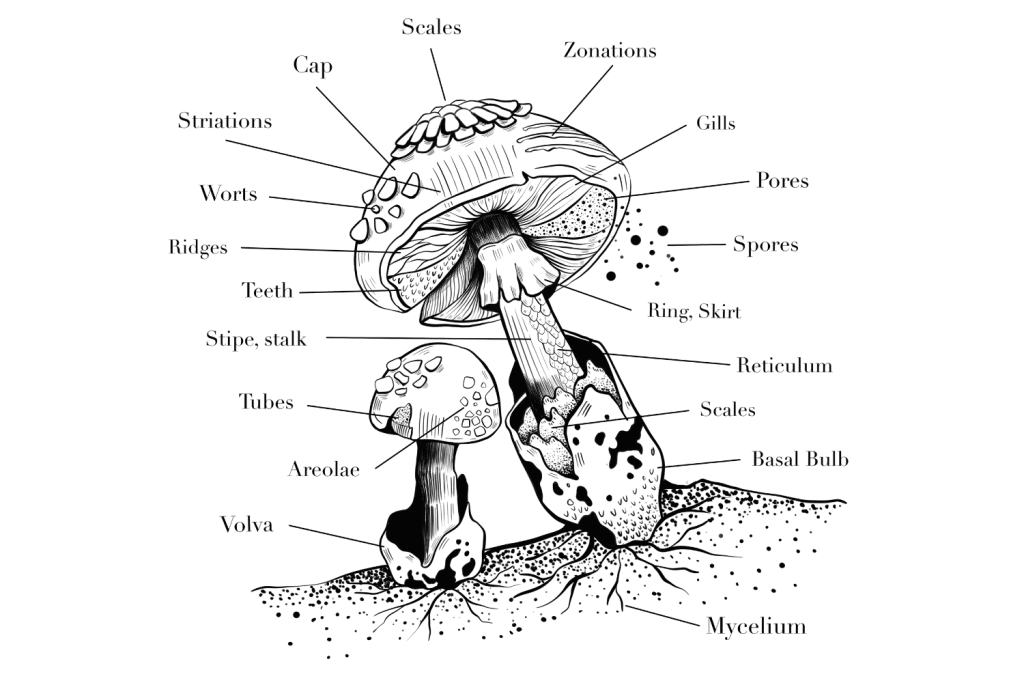
With that said, here are the defining features of P. tampanensis:
1. Mushroom Caps
The caps of Psilocybe tampanensis mushrooms range in shape from conical (cone-shaped) to convex (outwardly rounded) and slightly umbilicate (flat with a small central depression).
The caps are hygrophanous, with a caramel-brown color when wet and a yellowish-gray color when dry. They have a diameter of between 1 and 2.5 centimeters (0.4 to 0.9 inches) — they’re easy to miss since they blend in with the sandy soils and dry, golden grass.
The surface is smooth without bumps or blemishes and is somewhat sticky when wet — bruising blue when damaged.
2. Gills
The gills of Psilocybe tampanensis are adnate (broadly attached with an indent around the stipe). They are brown to dark purple — darkening as the mushrooms mature and begin to sporulate.
3. Stipe (Stem)
The stipe of Psilocybe tampanensis is thin and leggy, ranging from 2 to 6 centimeters (0.8 to 2.4 inches) long and 1 to 2 mm (0.04 to 0.08 inches) thick. They are creamy white to caramel brown and bruise blue when damaged or disturbed.
They have an equal length from the base to the cap, with a slightly enlarged basal bulb. The partial veil is present in young mushrooms but soon disappears, leaving no annulus on the stipe.
4. Spores
The P. tampanensis spore print is purple-brown to black. The spores themselves are rhombic when you view them face-on and roughly elliptical from the side view. When viewed under a microscope, the spores appear yellowish-brown and have a thick, smooth wall and a distinct germ pore.
Spore dimensions: 8.8 to 9.9 by 8 to 8.8 by 5.5 to 6.6 μm (micrometers).
The basidia (spore-bearing structures) are four-spored, translucent, and measure 14 to 22 by 8 to 10 μm.
5. Sclerotium
The sclerotia (magic truffles) of P. tampanensis range in size, but they’re generally 1 to 3 centimeters (0.4 to 1.2 inches) — similar in size to a walnut. However, they can grow much larger — occasionally as large as a tennis ball. They are rusty brown to tan with light gray features.
Each sclerotia nodule resembles a small tuber, such as those produced by Zingiber officinale (ginger) or Curcuma longa (turmeric). Their texture is firm, dense, and rubbery, and the scent is strong, earthy, and slightly sour.
Psilocybe tampanensis Look-Alikes
Psilocybe tampanensis has several potential look-alikes. Mistaking a similar-looking species for P. tampanensis is highly likely due to the rarity of its mushrooms.
Picking and consuming one of these look-alikes could prove fatal — many similar species produce deadly amatoxins that can cause severe stomach discomfort, vomiting, liver and kidney damage, and, in worse cases, death through organ failure.
We do not recommend searching for this species unless you’re an experienced mycologist/mushroom forager. If you’re new to mushroom hunting and want to seek out psychedelic fungi, we recommend looking at Psilocybe cyanescens, Panaeolus cyanescens, Psilocybe semilanceata, or Psilocybe cubensis.
With that said, here are a few commonly misidentified species that look similar to P. tampanensis:
1. Psilocybe spp. (Magic Mushrooms)
Other magic mushroom species in the Psilocybe genus are easily misidentified by the amateur forager searching for Psilocybe tampanensis. Species such as Psilocybe mexicana and Psilocybe caerulescens share some similarities with P. tampanensis.
Some species of Psilocybe grow in similar habitats and share characteristics such as cap shape, size, and color. By learning how to identify the other species of Psilocybe present in the area, the forager can rule them out if they come across them in the field.
Psilocybe species aren’t toxic, and they all contain psilocybin. The effects of species in this genus are similar, but alterations in alkaloid contents make some species more potent than others.
2. Panaeolus spp. (Mottlegills)
Many species in the Panaeolus genus share similarities with Psilocybe tampanensis. Species in this genus — often referred to as “Mottlegills” — have long, thin stems and conical or rounded caps. Some species can be brown and look remarkably similar to P. tampanensis mushrooms.
Some species in the Panaeolus genus produce low levels of psilocybin and psilocin, making them mildly psychedelic. However, other species can cause gastric distress if consumed. Before heading into the field, it’s essential to learn about the potentially similar Panaeolus species in your area and how to distinguish them from P. tampanensis.
3. Galerina marginata (Funeral Bell)
Galerina marginata is a small brown mushroom that’s highly toxic. It has adopted the common name “Funeral Bell” for good reason. If large enough quantities of these small mushrooms are consumed, they can cause organ failure, leading to a painful death.
This mushroom species shares some similarities with Psilocybe tampanensis, but luckily, it has several determining features that set it apart. However, the amateur forager could confuse the two species. Know how to identify the Funeral Bell to ensure it’s never mistaken for P. tampanensis or any other Psilocybe species.
4. Protostropharia semiglobata (Dung Roundhead)
Protostropharia semiglobata — otherwise known as the “Dung Roundhead” — is a small brown mushroom that grows in and around animal dung. These mushrooms can cross over into similar habitats as Psilocybe tampanensis and may be mistaken by the amateur forager.
This species is relatively easy to tell apart from most species of Psilocybe, but it’s wise to educate yourself on its appearance if you’re new to foraging. This species isn’t highly toxic, but it’s considered inedible and can cause digestive discomfort and nausea if ingested.
Can You Grow Psilocybe tampanensis Truffles At Home?
Yes. It’s possible to grow Psilocybe tampanensis mushrooms and produce psychedelic sclerotia at home.
If you’re interested in growing magic mushrooms, this species isn’t recommended for beginners. People new to mushroom cultivation should start with an “easily cultivated species” such as Psilocybe cubensis. However, for those interested in producing sclerotia, this is a great species to start with.
Due to the lack of a “fruiting phase,” cultivating magic truffles is relatively straightforward. As long as the substrate is sterilized and no contaminants are introduced during inoculation, cultivating P. tampanensis is as easy as baking a cake. However, growing truffles is a bit like watching paint dry — it takes a long time.
How to Cultivate Psilocybe tampanensis Sclerotia
It’s surprisingly simple to cultivate Psilocybe tampanensis sclerotia (Philosopher’s Stones). The process is remarkably similar to growing magic mushrooms. However, rather than fruiting the mycelium so it produces mushrooms, it’s left until sclerotia forms from the mycelium.
Growing magic truffles of any species is a waiting game. It can take over four months to produce Philosopher’s Stones, even longer if you want to produce larger truffles — the longer you wait before harvesting, the larger the truffles will be.

Here’s a rundown of the cultivation process:
Step 1: Preparing the Substrate
The best substrate for growing Philosopher’s Stone truffles is grass seed. However, other grains, such as rye grain or a birdseed mix, will work too. If you use grass seed, ensure the seed is uncoated and untreated.
In a large bowl or bucket, mix ten parts of grass seed with five parts of water — for example, 1000 grams of grass seed will require 500 milliliters of water. Leave the mixture for an hour or so to absorb the water.
Take a mushroom grow bag, such as those used to cultivate oyster mushrooms, and fill it with the seed and water mixture. Then, place the bags into a pressure cooker with a small amount of water in the base. “Cook” the bag at 15 psi for an hour. After an hour, let the pressure cooker naturally depressurize and cool down completely — this will take a few hours.
Step 2: Inoculating the Substrate
Once the substrate-filled bag has completely cooled, remove it from the pressure cooker. The bags are completely sealed, so you don’t have to worry too much about sterilizing your surroundings. However, it’s good practice to give everything around you a wipe with isopropyl alcohol.
Heat the needle of a syringe filled with P. tampanensis spores using a cigarette lighter to sterilize it. Once cooled (30 seconds to a minute), inject the grow bag with 4 to 8 CCs of the liquid. The grow bag should have a small mesh tab for inserting the needle without introducing contaminants.
Step 3: Incubation
Once inoculated, the mushroom grow bag should be kept in a warm, dark place. Ideally, the temperature around the bag should be between 21 °C to 25 °C (70 °F to 77 °F). A boiler room or cupboard is a great place to store the bag.
Monitor the temperature surrounding the bag regularly, and occasionally, shake it to disperse the mycelium and encourage it to form evenly across the substrate.
The bag is ready for the next step once the substrate is entirely white with mycelium.
Step 4: Waiting for the Truffles to Form
Once the grow bag has completely colonized with mycelium, you’ll need to leave it alone and wait… and wait, and wait…
After several weeks, you’ll start to notice the formation of sclerotia. Avoid the temptation to open the bag and harvest a few — this will introduce contaminants that promote mold growth and encourage the mycelium to produce mushrooms.
After three to four months, the truffles should be large enough to harvest. You can leave the colony for up to eight months before harvesting — the longer you wait, the larger the truffles will be. However, keep a close eye on the bag and harvest the truffles immediately if you see any subtle signs of mold.
Step 5: Harvesting the Mushrooms
After several months, the truffles will be ready to harvest. When the time comes, open the bag and pour the substrate into a large, shallow box.
Sift through the substrate and “dig for your gold.” You should find several dense truffles throughout the substrate — simply remove them, brush them clean, and store them.
How to Prepare & Store Philosopher’s Stone Magic Truffles
After harvesting Psilocybe tampanensis truffles, they must be prepared and stored to prolong their shelf life.
Fresh magic truffles last far longer than fresh magic mushrooms. Whereas freshly harvested magic mushrooms last for around a week in the fridge, you can expect magic truffles to last for up to two months if prepared correctly.
If you purchase truffles, they’ll either come dried or fresh and vacuum-packed — the latter is more common, especially in the Netherlands, where fresh truffles are legal to sell, but dried truffles are not. Vacuum packing the truffles increases their shelf life. When stored loose in the fridge, they will last for around two weeks, but when vacuum-packed, they last for two months or more.
If you grow your own truffles, you may think vacuum packing is out of the question because of the cost. However, vacuum sealers are cheaper than you may think. You can find a decent enough one online for 30 to 50 dollars.
Once the truffles are harvested, they should be brushed clean and air-dried for five or six hours to remove any moisture on the surface. Once clean and dry, the truffles can be vacuum-packed using a vacuum sealer. Pack no more than 20 grams of truffles in each pack — stuffing more than this inside increases the chances of air gaps, encouraging mold growth.
Once sealed in the vacuum packaging, the truffles can be stored in the fridge for two to three months.
Dehydrate them if you want to increase their shelf life even further. Magic truffles are denser and hold far more moisture than magic mushrooms, making them a little more challenging to dry.
To prevent mold and decomposition, the truffles must be 100% moisture-free before storage. A food dehydrator is the best way to dry the truffles completely.
Small truffles can be dehydrated whole but cut larger truffles with a sharp knife before dehydrating them. Spread them evenly in the dehydrator without touching, and run them on low heat for at least 72 hours.
The truffles will lose around 60% of their weight once dried. You can monitor the moisture levels of the truffles by weighing the batch before and after. If you start with 100 grams of fresh truffles, you should end up with around 40 grams of dried truffles.
Once dried, store the truffles in jars with a few packets of food-safe silica gel or a similar desiccant to ensure any remaining moisture. Store the jars in a cool, dark place.
Dried truffles will last indefinitely, but they will begin to lose potency after a year or so.
Tips For Taking Psilocybe tampanensis Truffles
Magic truffles differ slightly from magic mushrooms in appearance, texture, and flavor.
The most important thing is to break the truffles down before consumption. These dense lumps of mycelium can be harsh on the stomach and cause discomfort if not ground or chewed properly before swallowing. If swallowed whole, the effects may not be as intense either — some psilocybin will be trapped in the mycelium flesh.
With this in mind, here are a few popular methods of consumption for P. tampanensis truffles:
1. Eating the Magic Truffles Whole
The easiest way to take Psilocybe tampanensis truffles is to eat them whole. Doses of truffles can be weighed out, chewed up, and swallowed with water. This isn’t the most pleasant way to consume them, but it works.
Improve the absorption of the active compounds by chopping, grinding, or slicing the truffles into smaller pieces before consumption.
You can also soak them in lemon juice to speed up the onset of effects — a method known as Lemon Tek. The acid in squeezed lemon juice helps break down the cell walls of the truffles and starts the process of psilocybin metabolization. This speeds up the onset time and helps ease the stomach discomfort associated with digestion.
2. Making Magic Truffle Tea
You may have heard of magic mushroom tea, but did you know you can also make it from magic truffles?
You can use magic truffles as a replacement for mushrooms in shroom tea. The process of making the psychedelic brew is the same, but the truffles are prepared slightly differently.
When making psilocybin tea from shrooms, the dried mushrooms can be ground into a fine powder. This can be difficult to do with magic truffles because they contain more moisture. Instead of grinding them, finely dice the truffles using a sharp knife before brewing them in hot water.
You can learn how to make psilocybin tea here: How to Make Shroom Tea: Step-by-Step Guide
Just make sure to prep the truffles as mentioned above instead of attempting to use a food processor to grind them up. The taste of the truffles will be more prominent in the finished tea than when using shrooms. I recommend adding a strong herbal tea blend, such as peppermint or ginger, to disguise this.
3. Making Magic Truffle Capsules
Many people use magic truffles, such as those produced by Psilocybe tampanensis, for microdosing. The thing that puts most people off of microdosing with psilocybin truffles is the taste. Making microdose capsules eliminates the foul taste and makes consumption more discrete and convenient.
Making capsules from magic truffles can be challenging due to their moisture content. First, chop the truffles into smaller pieces, then allow them to dry naturally in a well-ventilated environment or by using a food dehydrator.
Once the truffle pieces are fully dry, grind them with a mortar and pestle. It’s important that they’re completely dry. Otherwise, they will form a paste rather than a coarse powder; even a little moisture can cause the capsules to turn bad.
Fill pill capsules with the dried truffle powder. Each dose of P. tampanensis truffle powder should weigh between 0.35 and 0.40 grams. Once the capsules are filled and sealed, store them in glass jars in a cool, dark place.
Are Psilocybe tampanensis Mushrooms or Truffles Legal?
Both Psilocybe tampanensis mushrooms and truffles produce the psychedelic compound psilocybin. Although these shrooms grow in the wild, they’re illegal to pick and consume in their native habitat — Tampa, Florida — and elsewhere.
Psilocybin is a restricted substance in most countries, which makes the cultivation, consumption, and ownership of Psilocybe tampanensis mushrooms and truffles illegal. Getting caught with a bag of Philosopher’s Stones could land you a hefty fine or jail time in the United States, the United Kingdom, and most of Europe.
That said, there are a few exceptions, and certain countries and regions are relaxing their laws around psychedelic substances. Some countries still have restrictions, but the police rarely enforce the laws, meaning shrooms and truffles are illegal, but you’re unlikely to face penalties for owning or consuming them.
Let’s take a look at the legality of P. tampanensis country by country:
1. Canada
In Canada, the production, sale, and possession of psilocybin mushrooms and truffles are illegal. However, several magic mushroom shops are popping up across the country in major cities and towns and online. Although these stores get raided from time to time, they are mostly ignored by law enforcement.
The police in Canada seem to turn a blind eye to the production, sale, and consumption of magic mushrooms and truffles. Buying magic truffles in the country is incredibly easy and low-risk. The postal laws in Canada also make it illegal for law enforcement to intercept packages, meaning psychedelic substances can be sold online within Canada without the risk of an order being seized.
This relaxed attitude toward magic mushrooms and truffles is similar to how cannabis was before it became legal in Canada. We can expect psilocybin to head in a similar direction, eventually becoming legalized and regulated by the government.
2. The United States
In the United States, psilocybin remains illegal under federal law. It’s also a restricted substance under state law in most states. However, there are a few exceptions, and a handful of states have altered their legislation surrounding magic mushrooms and truffles.
Some states have legalized or decriminalized psilocybin for medical and/or recreational use. Other states haven’t reversed or relaxed laws state-wide, but certain municipalities within the state have altered their legislation.
Here are the US states that have altered their legislation on psilocybin in some way:
It’s important to note that although it’s possible to order magic truffles online in the US, the postal laws are different from Canada. The authorities can intercept packages, making it somewhat risky to order controlled substances via the Internet.
3. Europe
In Europe, magic mushrooms and truffles are illegal in most countries. However, in the Netherlands, magic truffles are legal and can be purchased from a variety of vendors known as “Smart Shops” across the country. Strangely, dried truffles are illegal to sell, so most vendors vacuum pack and refrigerate them. It’s important to buy magic truffles from a reliable vendor that doesn’t overstore their truffles.
Magic mushrooms were once legal in Holland, but they were criminalized in 2008. A “loophole” in the law meant that truffles could still be sold and consumed without penalty. This led to a boom in the truffle market, and species such as Psilocybe mexicana and Psilocybe tampanensis began appearing all over the country.
Further south in Europe, Portugal has decriminalized all drugs. Psilocybin mushrooms and sclerotia aren’t technically legal and can’t be purchased from any legitimate vendors, but possessing small amounts and consuming them won’t land you in jail.
In Austria, psilocybin has been decriminalized. You can possess and cultivate magic mushrooms and truffles, but the law states that they must not be produced for use as a “drug.”
In most other countries in Europe, shrooms and magic truffles are illegal. However, it’s possible to buy viable magic mushroom spores legally. These spores can be cultivated to produce psilocybin mushrooms and sclerotia, but once they begin to grow, they become illegal.
Frequently Asked Questions
Now, I’ll answer a few questions about truffles and shrooms. Check out our website if you need more information.
1. What Do Magic Truffles Taste Like?
If you think magic mushrooms taste bad, wait until you get your mouth around a magic truffle. These mycelial growths are worlds apart from their gourmet Italian cousins — they taste absolutely awful.
The flavor of psilocybin truffles is somewhat metallic. Many people compare them to “old pennies” with sour notes and a funky aftertaste. They can often taste quite chemically, especially when they’re fresh. Don’t worry if your truffles taste somewhat synthetic; they naturally taste like this.
Truffles must be chewed thoroughly before swallowing to ensure they have broken down enough to release the psilocybin. This means there’s no escaping the taste of these foul fungi. If the truffles aren’t chewed thoroughly before they’re digested, they can cause stomach cramping, and the effects may not be as potent.
Many people struggle to stomach magic truffles, even if they don’t mind the taste of psilocybin mushrooms. The flavor is intense, and they don’t tend to sit well in the stomach, meaning the individual can experience nausea and, in some cases, vomiting. Feelings of nausea tend to go away as the effects kick in, but some people report feeling sick throughout the trip.
2. What Other Species of Psilocybin Mushrooms Produce Truffles?
It’s not just Psilocybe tampanensis that produces psychedelic sclerotia. Several other magic mushroom species also produce these growths.
Here’s a list of truffle-producing magic mushroom species:
- Psilocybe mexicana
- Psilocybe caerulescens
- Psilocybe semilanceata
- Psilocybe gallindoi
- Psilocybe atlantis
- Psilocybe pajaritos
3. What’s the Easiest Psilocybin Mushroom Species to Grow?
The easiest species of magic mushroom to grow is Psilocybe cubensis. They have been cultivated for decades, and as a result, hundreds of different strains have been created and discovered — all with different growth characteristics and tryptamine production.
Although P. cubensis is an easy species to cultivate, thanks to its contamination-resistant nature, some strains are easier to grow than others.
Here’s a list of the easiest Psilocybe cubensis strains to grow:
- Golden Teacher
- The Koh Samui Strain
- The Lipa Yai Strain
- A-Strain (A+)
- Florida White (F+)
- Trans Envy
- White Rabbit
4. Where Can You Buy Magic Mushrooms & Truffles from?
Depending on where you live in the world, you may be able to purchase magic truffles from P. tampanensis, P. mexicana, and other sclerotium-producing mushroom species. As mentioned, the laws surrounding magic mushrooms and truffles vary from country to country, but generally speaking, psilocybin is banned.
That said, magic truffles are available to purchase freely in the Netherlands, Canada, and parts of the United States.
In the Netherlands, magic truffles are legal to sell, possess, and consume. They’re available to buy from “Smart Shops” across the country and from a variety of online vendors. You’ll find magic truffles for sale in the Netherlands at Tatanka, Zamnesia, and Sirius.
In Canada, psilocybin remains illegal. However, you can buy magic mushrooms and truffles from various shroom vendors scattered across the country. Several reliable online vendors sell them, such as Zoomies, Blue Goba, and Eden Direct.
In the United States, magic mushrooms and truffles remain federally illegal, but some states have legalized or decriminalized the fungi. In legalized states, magic truffles are available from local distributors and dispensaries.
Read More: Where to Buy Magic Mushrooms Online in Canada
Subscribe For More 🍄
References
- Guzman, G., & SH, P. (1978). A new bluing species of Psilocybe from Florida, USA.
- Morris, H. (2013). BLOOD SPORE. Harper’s Magazine.

